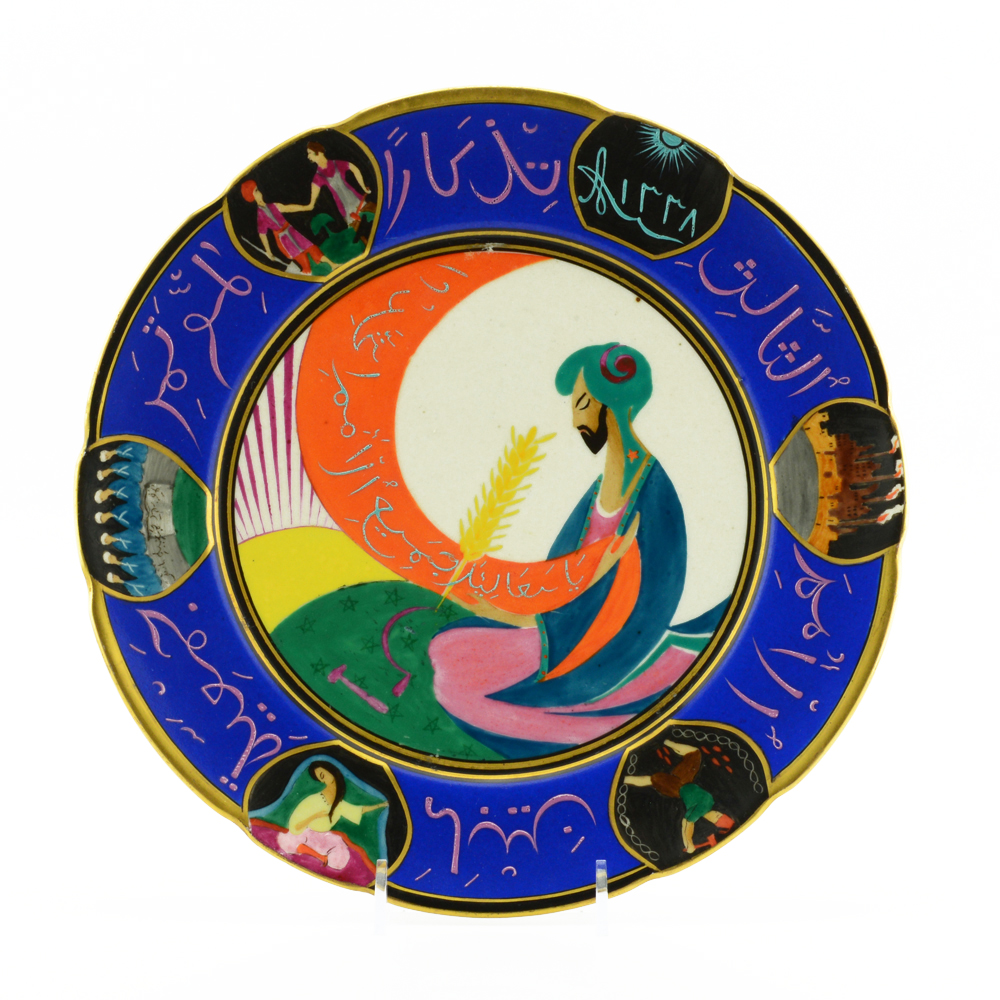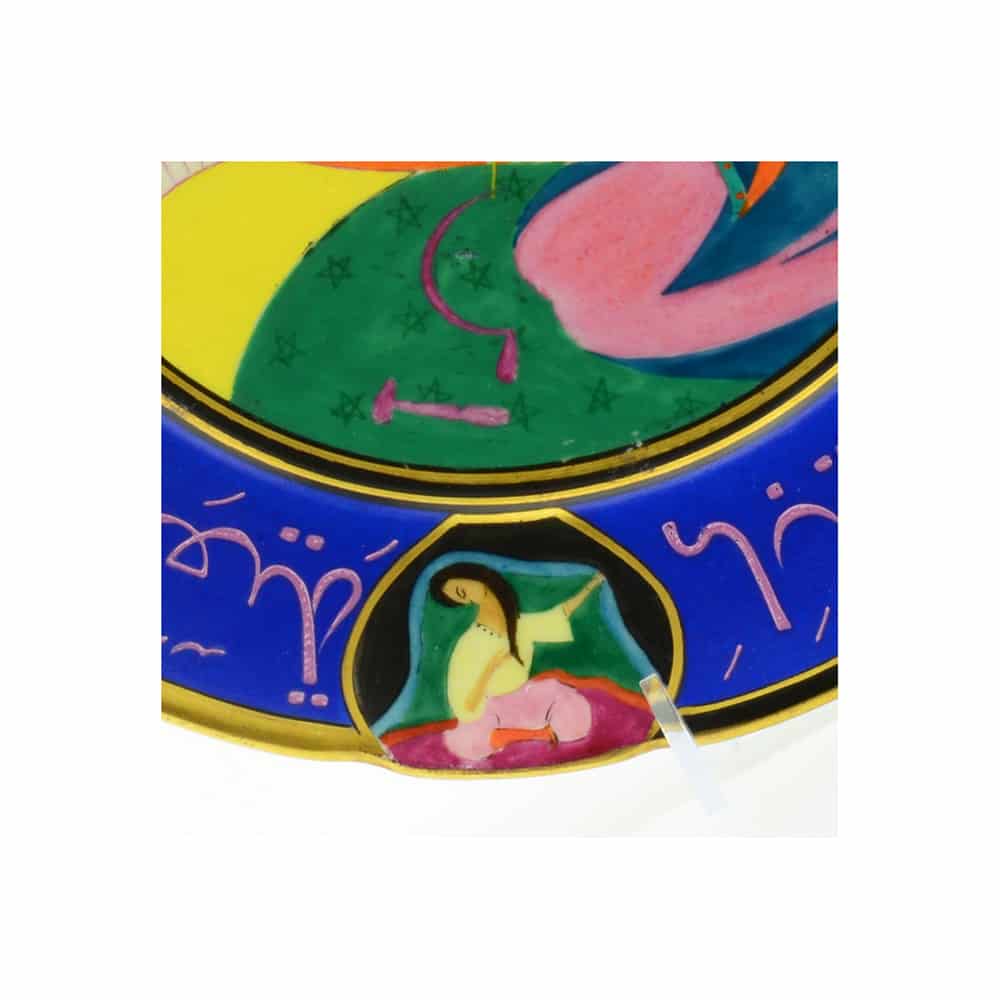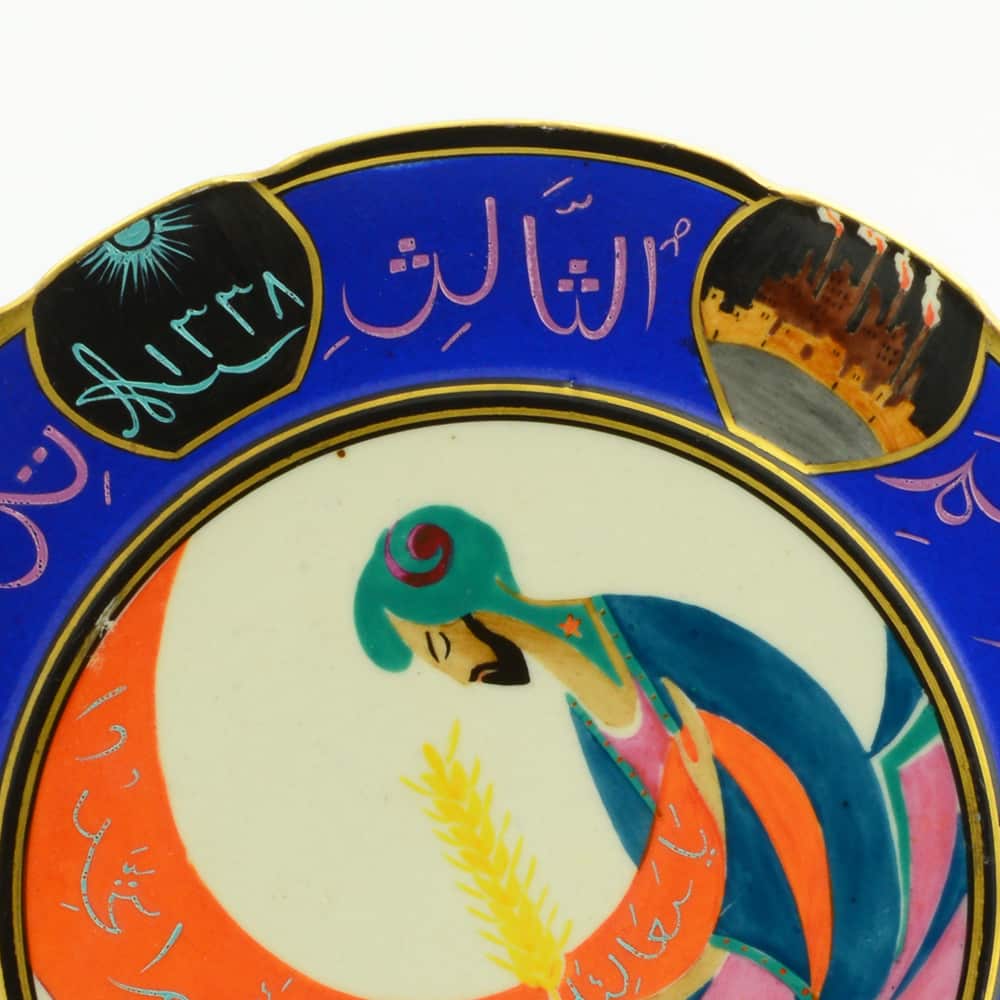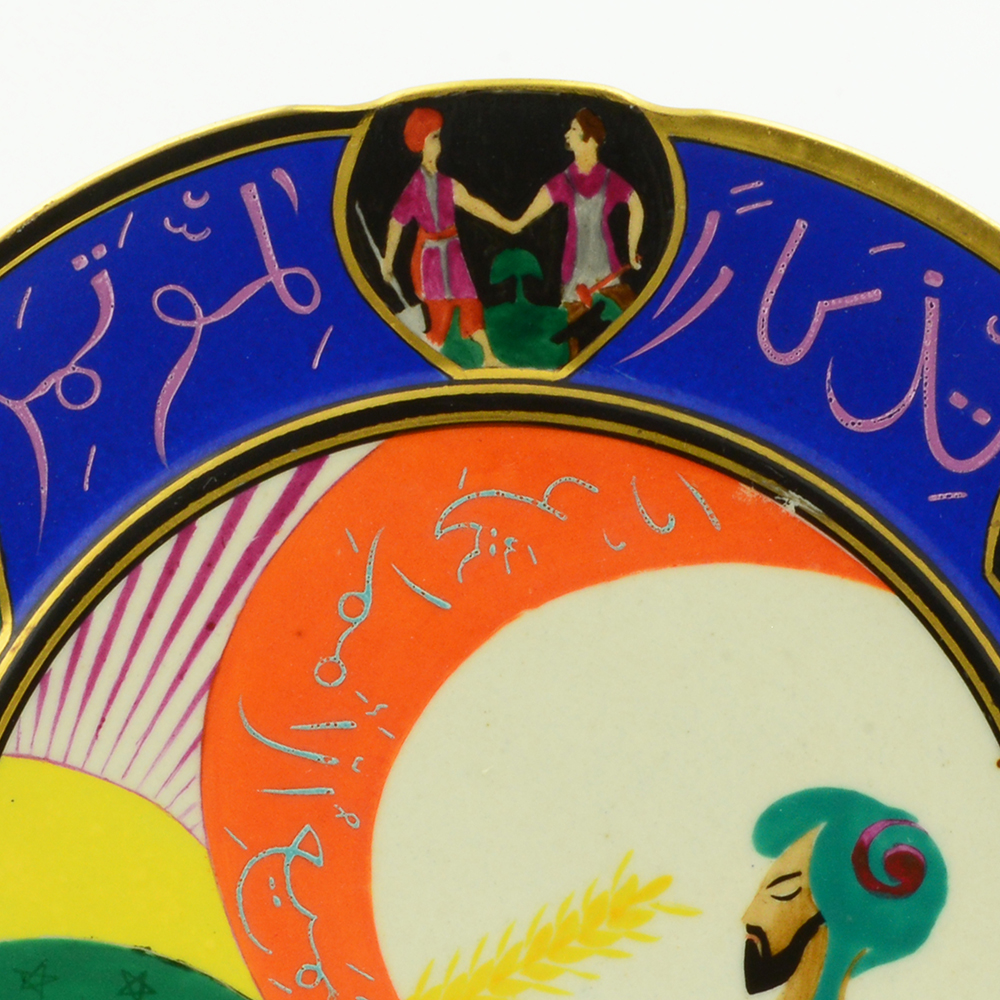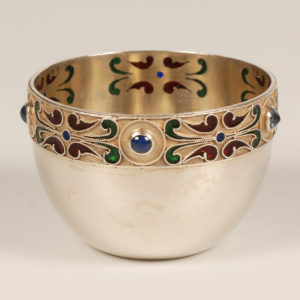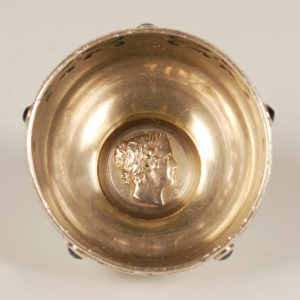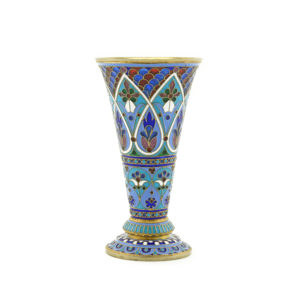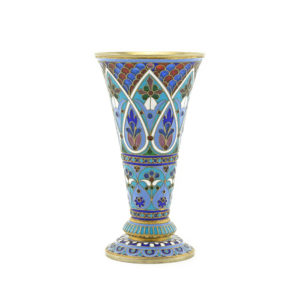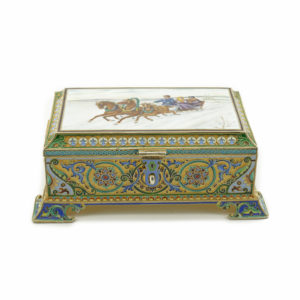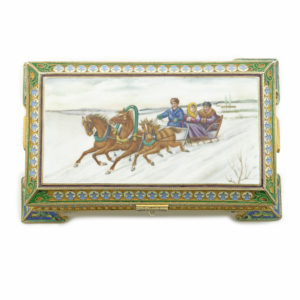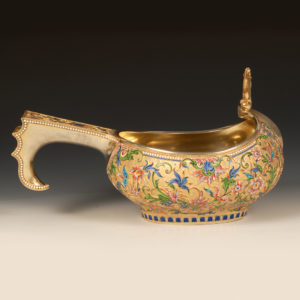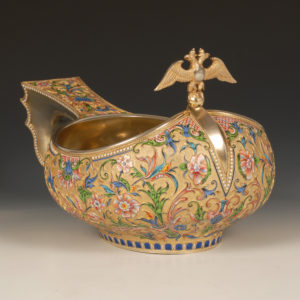Our Antiques
- The product is already in the wishlist!
A 1921 Soviet VKhUTEMAS propaganda porcelain plate in honor of the Third Congress of the Comintern designed by Tatevosyan
To order by phone or get more info call us at +1 (425) 271-8950
Description
A Soviet porcelain propaganda plate in honor of the Third Congress of the Communist International after a design by Oganes Tatevosyan, VKhUTEMAS Kerfak (Ceramic Department), designed 1921. The cavetto with a scene of a seated man in “Eastern” dress cradling in his hands a scrolling orange banner with the Arabic inscription “Workers of the World, Unite,” he is seen against a sunrise, symbol of the beginning of a new era, & with a sheaf of wheat, hammer, & sickle; the deep blue border with the Arabic inscription which translates literally as “Souvenir of the Third Congress of the Gathering of Nations,” relieved by six shaped cartouches, that at upper left with the date 1338 in the lunar Hijri calendar (an error, as 1338 is equivalent to 1919-1920 in the Gregorian calendar & the congress was held in 1921), the other five depicting factories, a man in a fez swinging a hammer, a Central Asian woman removing her veil, a group of seated men, & a blacksmith & a farmer in Central Asian dress shaking hands. The reverse with the mark of the VKhUTEMAS Ceramics Faculty reading VKhUTEMAS Kerfak in Cyrillic. Diameter 10 in. (25.5 cm).
In 1921 the Ceramics Department (Kerfak) of VKhUTEMAS (Moskovskie vyshie khudozhestvenno-technicheskie masterskie, the former Imperial Stroganov School) received a commission for porcelain items to be given as gifts to participants of the Third World Congress of the Communist International (June-July 1921) through E.V. Ravdel, rector of the school between 1920 & 1923. Students submitted 51 designs & 12 were selected for completion. The majority of the participants remain unknown, with the exception of Oganes Karapetovich Tatevosyan (1889-1974), who had graduated in 1916 from the Moscow School of Painting, Sculpture, & Architecture after studying in the workshop of painter Konstantin Korovin. VKhUTEMAS students were sent to the Dulevo Porcelain Factory near Moscow to complete the order, which totaled about 1,750 objects. According to one account, the entire commission was completed in forty days. Tatevosyan, who is primarily known as a painter, had lived in Samarkand, Uzbekistan in 1918 & 1919 & had participated in several state-sponsored programs to decorate the city for Soviet holidays with large, bright propaganda panels. The artist had taken up studies at VKhUTEMAS with the hope of creating large, permanent ceramic panneaux reminiscent of more traditional ceramic designs on the building of Uzbekistan but in a modern voice. On the series of gifts for the Third Congress of the Comintern & on Tatevosyan, see Nina Lobanov-Rostovsky, Revolutionary Ceramics: Soviet Porcelain 1917-1927, London, 1990, no. 43, p. 63; Deborah Sampson Shinn, Revolution, Life & Labor: Soviet Porcelains, (1918–1985), New York: Cooper-Hewitt Museum, 1992, no. 8, p. 21; Elvira Sametskaia, Sovetskii agitatsionyi farfor, Moscow, 2004, pp. 303, 394-399; Lidia Andreeva, Soviet Ceramics: The Sandretti Collection of 20th Century Russian Art, Bad Breisig: Palace Editions, 2004, no. 59, p. 43;&, E.B. Sametskaia, Sovetskii farfor 1920-1930-kh godov v chastnykh sobraniyakh Sankt-Peterburga. Moscow, 2005, no. 311, pp. 232 & 340.
Contact Us
Subscribe to receive our newsletter and new acquisitions
